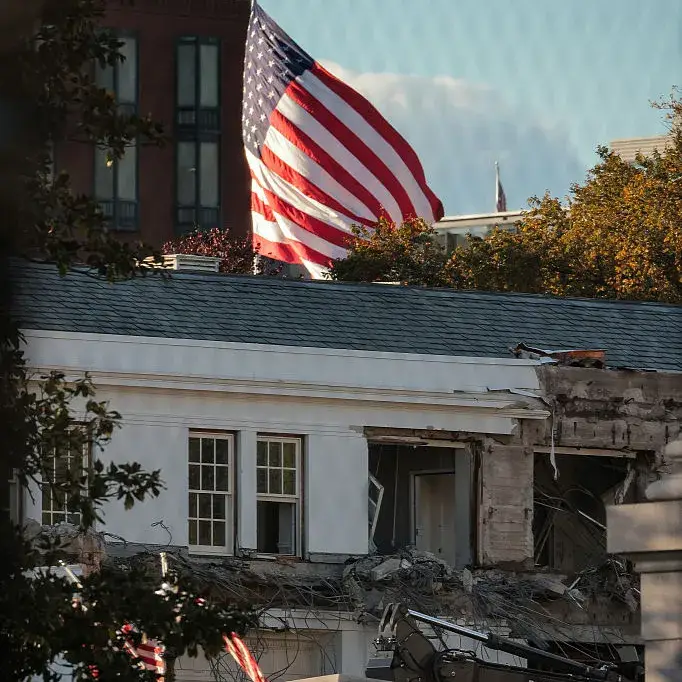
Washington, D.C. — President Donald Trump is facing a federal lawsuit over his controversial teardown of the East Wing of the White House, a move critics claim violates historic preservation laws. But legal experts and historians argue the case may be more political theater than legal substance, pointing to decades of precedent where past presidents made sweeping changes to the executive mansion.
🏛️ The Lawsuit: Preservation vs. Presidential Authority
Filed in late October 2025 by a coalition of preservation activists and former National Park Service officials, the lawsuit alleges that Trump’s demolition of the East Wing to build a privately funded ballroom violates the National Historic Preservation Act and the Antiquities Act. Plaintiffs argue the White House is a protected landmark and that the president overstepped his authority by bypassing advisory boards and public input.
However, constitutional scholars note that the White House is not a museum—it is both a residence and a workplace for the sitting president. “The president has broad discretion over the White House grounds,” said legal analyst Dr. Marcia Ellison. “Unless Congress specifically restricts that authority, courts have historically deferred to executive decisions.”
🕰️ Historical Context: Renovations Are Nothing New
Trump’s renovation is far from unprecedented:
Theodore Roosevelt (1902): Removed the original greenhouse and stables, added the West Wing.
Franklin D. Roosevelt (1933–1945): Expanded the West Wing and built the Oval Office.
Harry Truman (1948–1952): Oversaw a complete gutting and rebuild of the White House interior due to structural collapse.
John F. Kennedy (1961): Commissioned extensive interior redesigns, including historic furniture replacements.
Barack Obama and George W. Bush: Made tech upgrades and security enhancements.
In each case, presidents made significant structural and aesthetic changes—often without lawsuits or public outcry.
💰 Funding and Transparency
Trump’s East Wing teardown is being funded entirely by private donors, according to White House statements. The administration released a list of contributors and confirmed that no taxpayer money is being used. Critics argue that the lack of public oversight is troubling, but legal precedent supports the president’s right to accept private funding for White House improvements.
⚖️ Legal Analysis: Weak Standing, Political Motives
Legal experts say the lawsuit may struggle to gain traction:
Standing: Plaintiffs must prove direct harm, which is difficult in cases involving federal property.
Jurisdiction: The White House is not subject to local zoning or preservation boards.
Precedent: Courts have consistently upheld presidential authority over the executive residence.
“This lawsuit is unlikely to succeed,” said constitutional attorney Leonard Grayson. “It’s more about making a statement than winning a case.”
🗣️ Political Reactions
Supporters of the president call the lawsuit hypocritical. “Where was this outrage when Truman gutted the entire building?” asked Rep. Byron Donalds. “This is selective outrage aimed at one man.”
Opponents argue that Trump’s renovation is excessive and symbolic of his disregard for tradition. “This isn’t modernization—it’s vanity,” said activist Rachel Klein.
🔍 What Comes Next
The ballroom construction is already underway, with completion expected in mid-2026. The lawsuit may delay landscaping and final design approvals, but experts say it’s unlikely to stop the project.
As the legal battle unfolds, the East Wing controversy serves as a reminder: the White House is not just a symbol—it’s a living, evolving space shaped by each administration. And while Trump’s changes may be bold, they are far from unprecedented.
Add comment
Comments